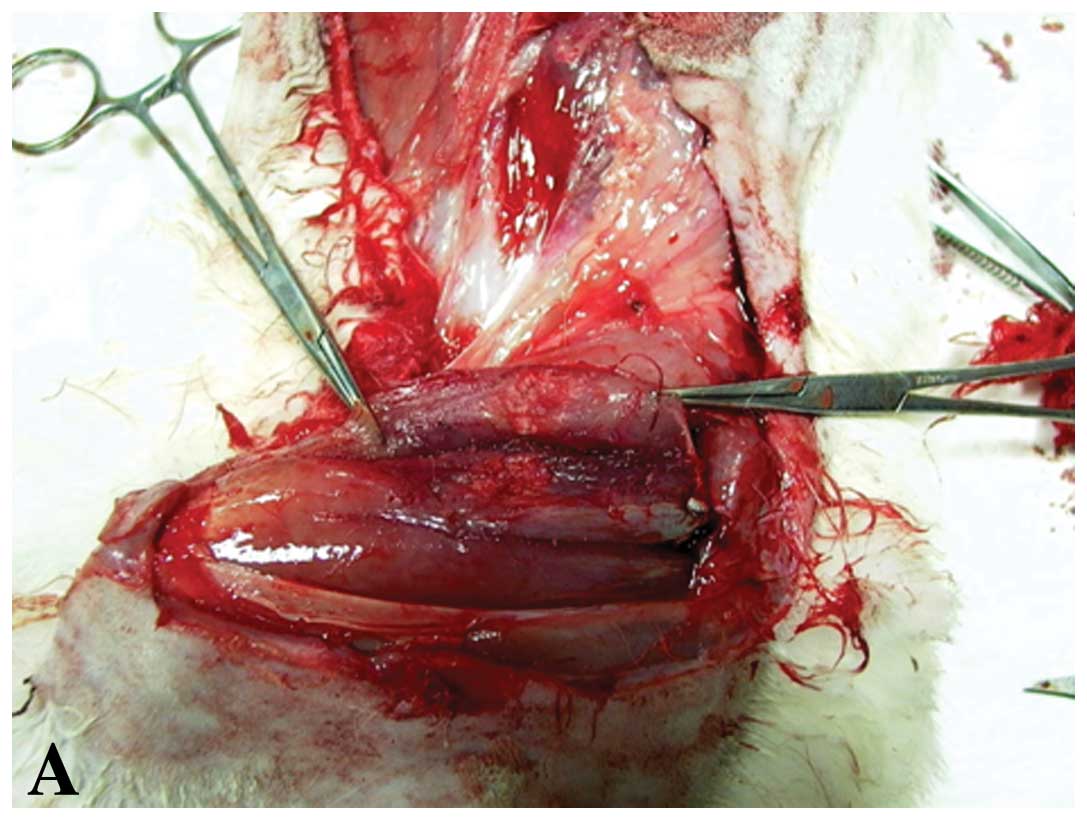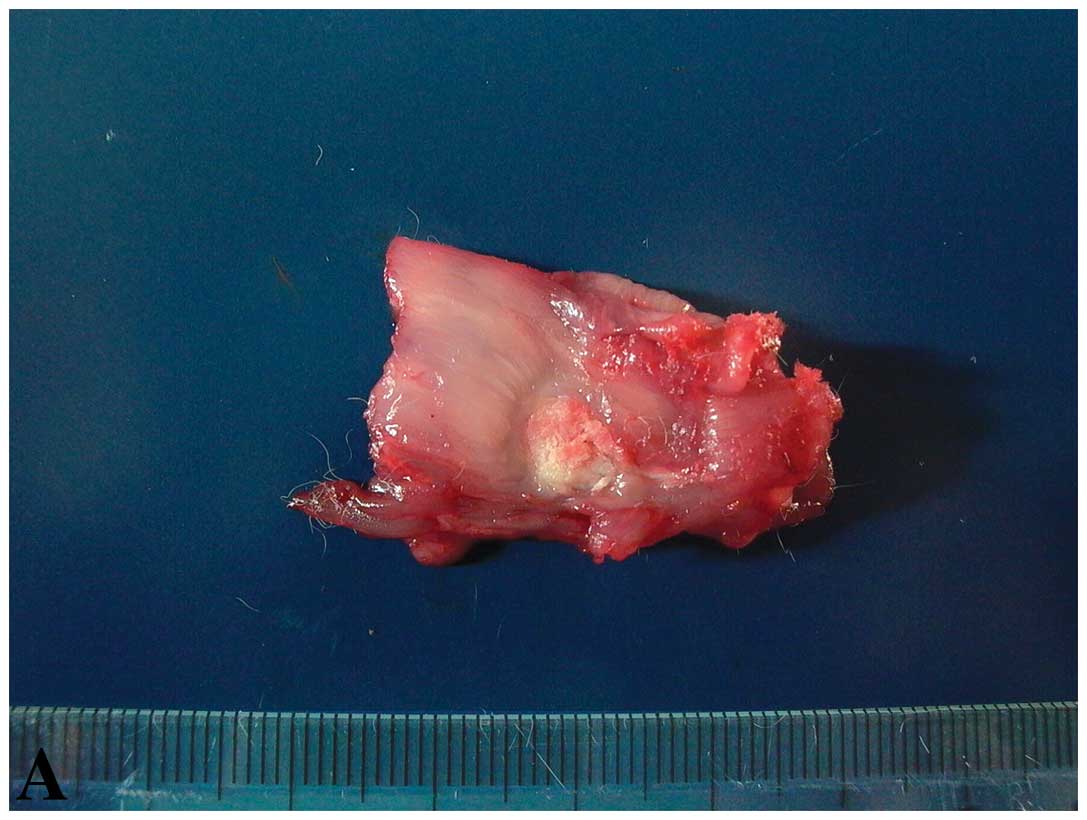|
1
|
Lynn JG and Putnam TJ: Histology of
cerebral lesions produced by focused ultrasound. Am J Pathol.
20:637–649. 1944.PubMed/NCBI
|
|
2
|
Ballantine HT Jr, Bell E and Manlapaz J:
Progress and problems is the neurological application of focused
ultrasound. J Neurosurg. 17:858–876. 1960. View Article : Google Scholar : PubMed/NCBI
|
|
3
|
Corry PM, Jabboury K, Kong JS, Armour EP,
McCraw FJ and Leduc T: Evaluation of equipment for hyperthermic
treatment of cancer. Int J Hyperthermia. 4:53–74. 1988. View Article : Google Scholar : PubMed/NCBI
|
|
4
|
ter Haar G, Rivens I, Chen L and Riddler
S: High intensity focused ultrasound for the treatment of rat
tumours. Phys Med Biol. 36:1495–1501. 1991.
|
|
5
|
ter Haar GR and Robertson D: Tissue
destruction with focused ultrasound in vivo. Eur Urol. 23(Suppl 1):
8–11. 1993.PubMed/NCBI
|
|
6
|
Illing RO, Kennedy JE, Wu F, ter Haar GR,
Protheroe AS, Friend PJ, Gleeson FV, Cranston DW, Phillips RR and
Middleton MR: The safety and feasibility of extracorporeal
high-intensity focused ultrasound (HIFU) for the treatment of liver
and kidney tumours in a Western population. Br J Cancer.
93:890–895. 2005. View Article : Google Scholar : PubMed/NCBI
|
|
7
|
Kennedy JE, Wu F, ter Haar GR, Gleeson FV,
Phillips RR, Middleton MR and Cranston D: High intensity focused
ultrasound for the treatment of liver tumours. Ultrasonics.
42:931–935. 2004. View Article : Google Scholar : PubMed/NCBI
|
|
8
|
Wu F, Wang ZB, Chen WZ, Zou JZ, Bai J, Zhu
H, Li KQ, Xie FL, Jin CB, Su HB and Gao GW: Extracorporeal focused
ultrasound surgery for treatment of human solid carcinomas: early
Chinese clinical experience. Ultrasound Med Biol. 30:245–260. 2004.
View Article : Google Scholar : PubMed/NCBI
|
|
9
|
Wu F, Wang ZB, Zhu H, Chen WZ, Zou JZ, Bai
J, Li KQ, Jin CB, Xie FL and Su HB: Extracorporeal high intensity
focused ultrasound treatment for patients with breast cancer.
Breast Cancer Res Treat. 92:51–60. 2005. View Article : Google Scholar : PubMed/NCBI
|
|
10
|
Kennedy JE: High-intensity focused
ultrasound in the treatment of solid tumours. Nat Rev Cancer.
5:321–327. 2005. View
Article : Google Scholar : PubMed/NCBI
|
|
11
|
Hazle JD, Stafford RJ and Price RE:
Magnetic resonance imaging-guided focused ultrasound thermal
therapy in experimental animal models: correlation of ablation
volumes with pathology in rabbit muscle and VX2 tumors. J Magn
Reson Imaging. 15:185–194. 2002.
|
|
12
|
Solomon SB, Nicol TL, Chan DY, Fjield T,
Fried N and Kavoussi LR: Histologic evolution of high-intensity
focused ultrasound in rabbit muscle. Invest Radiol. 38:293–301.
2003. View Article : Google Scholar : PubMed/NCBI
|
|
13
|
Hynynen K: The threshold for thermally
significant cavitation in dog’s thigh muscle in vivo. Ultrasound
Med Biol. 17:157–169. 1991.PubMed/NCBI
|
|
14
|
Moros EG and Hynynen K: A comparison of
theoretical and experimental ultrasound field distributions in
canine muscle tissue in vivo. Ultrasound Med Biol. 18:81–95. 1992.
View Article : Google Scholar : PubMed/NCBI
|
|
15
|
Van Leenders GJ, Beerlage HP, Ruijter ET,
de la Rosette JJ and van de Kaa CA: Histopathological changes
associated with high intensity focused ultrasound (HIFU) treatment
for localised adenocarcinoma of the prostate. J Clin Pathol.
53:391–394. 2000.PubMed/NCBI
|
|
16
|
Fennessy FM, Tempany CM, McDannold NJ, So
MJ, Hesley G, Gostout B, Kim HS, Holland GA, Sarti DA, Hynynen K,
et al: Uterine leiomyomas: MR imaging-guided focused ultrasound
surgery - results of different treatment protocols. Radiology.
243:885–893. 2007. View Article : Google Scholar
|

















